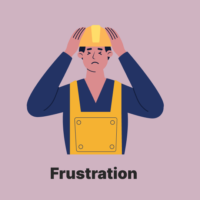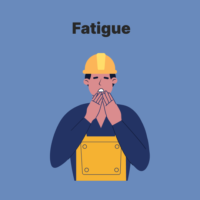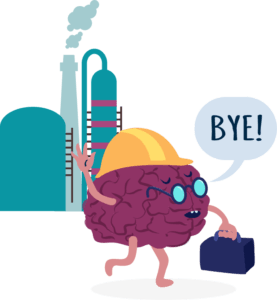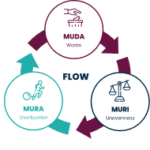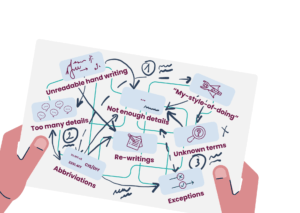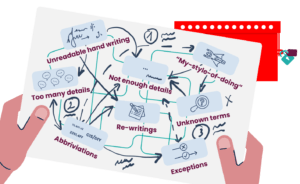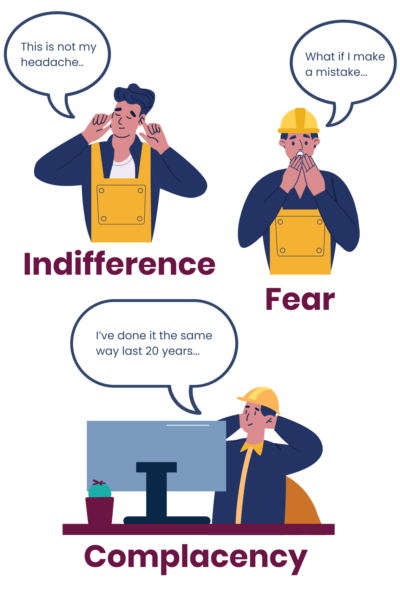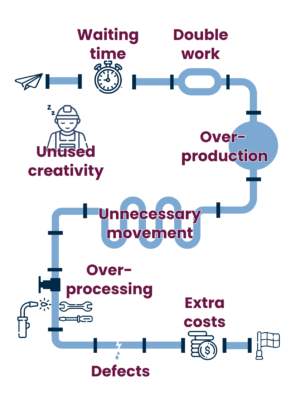“We must accept human error is inevitable
– and design around that fact.
Donald Berwick
What is Quality in Safety?
And how to approach it from the perspective of Operational Safety Excellence.
What is Quality?
Quality, in a broad sense, refers to producing goods or services that meet specified standards or criteria. It involves adherence to statistical bandwidth and ensuring that processes are carried out within defined parameters. Using terminology from the Lean methodology, the presence of excessive operational waste also indicates a lack of quality (Do you have too much waste? Then you are low on quality.)
Essentially, quality encompasses various aspects of a product, setting the foundation for its definition.

However, when discussing Safety, the discourse inevitably turns toward the aspect of the quality of individuals. Within this domain, we encounter two distinctive facets of people quality — collective and individual.
The collective quality often intertwines with organizational culture, posing questions about the skill levels and behavioral tendencies of the workforce. Is there a pervasive culture of quality in safety? How adept are individuals at adhering to safety protocols?
Simultaneously, the lens narrows down to scrutinize the quality of individual people. This involves an examination of their specific skill levels and the alignment of their actions with prescribed procedures. Consequently, in the aftermath of a serious incident, the initial feedback often revolves around the notion of human error.
When root-cause analysis is misleading?
When it comes to addressing incidents, especially those with severe consequences, the first response is almost always to blame a human error.
A stark example that underscores this is the tragic Bhopal industrial accident of 1984. This catastrophic event unfolded when a tank containing 42 tons of methyl isocyanate experienced a runaway chemical reaction due to water ingress, leading to a staggering number of casualties.
The initial response of a simplistic root-cause analysis with a linear thought process examining facts in chronological order was to pinpoint an error made by a human in the maintenance procedure.
The prescribed instructions stipulated that, during maintenance, a specific device should be inserted to prevent water from entering the tank. The operator overseeing the maintenance neglected to follow this crucial step, allowing water to infiltrate the tank. This breach in protocol triggered the catastrophic chain of events—unleashing a chemical reaction, releasing lethal gas into the village, and resulting in widespread devastation.
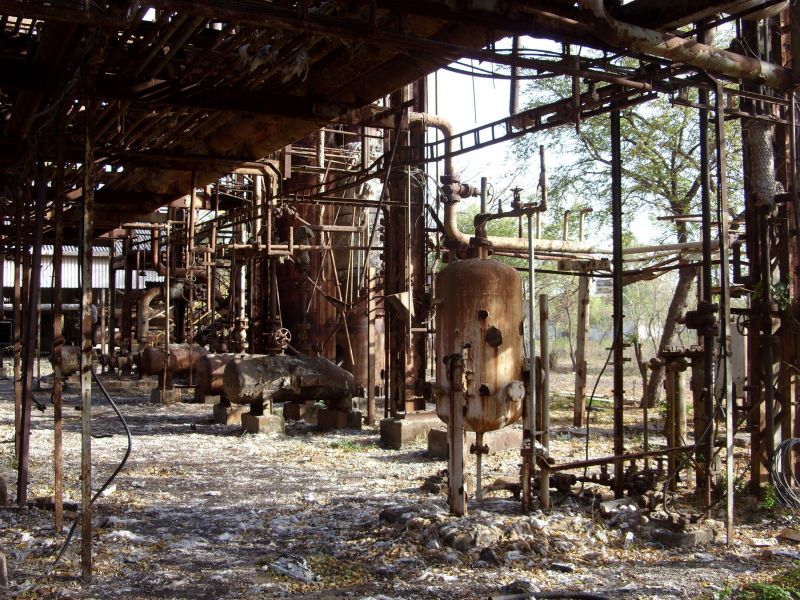
However, this linear root-cause analysis provides an oversimplified view of a highly complex situation. It conveniently places blame on an individual, ignoring more impactful forces.
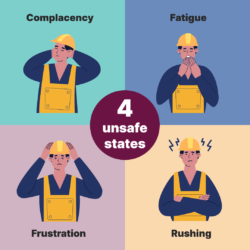
Look at the system
Quality as a holistic concept that urges us to scrutinize the entire system. It advocates for a more profound exploration of the multifaceted factors influencing the end result.
The Bhopal incident, upon closer examination, reveals harsh economic conditions faced by the plant, contributing to a lax approach to maintenance. The plant’s overall state of disrepair, incessant alarms, and a dismissive attitude toward safety audits all painted a picture of systemic issues that transcended individual actions.
The quality approach prompts us to question the simplicity of the initial narrative. It encourages us to acknowledge that there is seldom a singular, linear cause for such disasters. Instead, it is a complex interplay of various factors—economic downturns, conflicts between management and unions, and compromised safety protocols.
How Quality impacts the emotional state of people
This systematic approach is also supported by the fact that Quality has a direct response to the emotional state of individuals within the process. And that, in it’s turn, results in a poor quality delivery. Again and again, this turns into an endless loop: poorly designed process makes people frustrated, frustrated people are making wrong decisions, and wrong decisions lead to incidents.
We covered this in more detail in our previous article: Mindful and effective: how improved safety processes help to avoid unsafe states?
Quality in Operational Safety Excellence context
When we talk about safety and quality together, it goes beyond just following rules. It is a complicated puzzle that involves understanding human actions and the complex workings of systems.
For instance, when you’re getting ready for a task, an obligatory step is to perform a task risk analysis. This is a common practice worldwide, whether using paper or computer systems. It involves looking at the job beforehand and analyzing the potential risks associated with it. The task risk analysis has a few parts to it:
• Firstly, you consider how detailed the task description is. Is it clear and thorough enough for a proper risk analysis? This is a way to measure the quality of the preparation.
• Secondly, check how accurate the description is. Does it match how the task will actually be carried out? This involves comparing what’s written with what will happen in reality. So, it’s about being detailed enough for understanding and aligning with the execution.
• Finally, if you have a well-described job that matches the reality of its execution, another quality aspect to consider is the thoroughness of hazard identification. How comprehensive or excessive are the hazards outlined? These are three instances where you evaluate the quality during the preparation stage of performing a risk analysis.
In Operational Safety Excellence we zoom in to the level of operations and inject Quality in the process design itself. By doing so, a more comprehensive approach to improving safety quality can be established—one that goes beyond reactive responses to incidents and delves into proactive, systemic enhancements that safeguard against future calamities.
The power of Standardization
According to the knowledge from Operational Safety Excellence, there is one word for the solution: Standardization.
The concept of standardization encapsulates a systematic approach to defining what constitutes excellence and efficiency in operational processes. It is also a perfect example of human error prevention inserted in the process on the operational level. Standardization is not merely a set of rigid rules but a dynamic framework that guides individuals toward understanding what ‘good’ looks like and how to approach it.
Here are the steps to embark on the journey of standardization:
- What? Provide your team with tangible examples of what embodies a well-executed, efficient and desired task outcome (how GOOD looks like).By presenting real-world scenarios as benchmarks, individuals gain a practical understanding of the expectations within the context of their responsibilities.
- How? Provide comprehensive guidance on how to generate new materials with the emphasis on detailed, granular guidance rather than high-level abstractions. By imparting specific guidelines, individuals are equipped with the tools to assess and address challenges systematically.
- Check! Integrate of feedback loops, exemplified by the PDCA (Plan-Do-Check-Act) cycles. This iterative cycle allows individuals to engage in continuous improvement by learning from their experiences. After individuals have created task risk analyses, a collective examination ensues. This collaborative approach involves asking pertinent questions—How well were the examples applied? Were the rules faithfully applied?
- No satisfied? If feedback indicates stagnation or decline in performance, get into a deeper analysis of the system. Scrutinize training adequacy, cultural alignment, and the clarity of rules. In essence, it is a return to the systemic level, ensuring that the standards themselves are adaptive and responsive.
- Establish the Standard. Reuse of successful outcomes. Rather than reinventing the wheel with each new task, the materials generated through the standardization process become a repository of best practices. This not only streamlines future efforts but also reinforces a culture of consistency and reliability.
In conclusion, standardization, within the realm of operational safety excellence, emerges as a multifaceted tool for quality improvement. It empowers individuals with clear guidance, encourages continuous improvement through feedback loops, and ensures the efficient reuse of successful materials. As a holistic approach, standardization laying the groundwork for sustained quality improvement.
Conclusion
Understanding and enhancing Quality, especially in safety, requires a shift from simplistic root-cause analyses that lead to blaming individuals to a comprehensive systems approach. Quality is about the entire context of how safety procedures are designed and applied. Standardization, coupled with continuous feedback and systemic analysis, emerges as a powerful tool to improve and sustain quality, ensuring safer and more efficient processes and the emotional well-being of the team.






